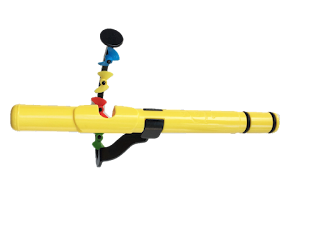Yellow Fever
Efforts To Improve Vaccine Stabilization Heat Up
The PATH researchers are not alone in tackling vaccine temperature stability, which is a major logistical challenge to achieving widespread vaccination, especially in developing countries. In September, Merck and the Wellcome Trust announced a new collaboration to develop vaccines for poor countries, aimed in part at modifying vaccines to eliminate the need for the so-called 'cold chain'—the temperature-controlled supply chain of storage and delivery facilities that aims to keep vaccines at a widely-agreed 2 to 8 degrees Celsius all the way from the factory floor to remote health clinics.
Smaller companies are also active in this research area. Aktiv-Dry, based in Boulder, Colorado, has created a stable dry powder formulation of the hepatitis B vaccine that can be stored at temperatures from 66 Celsius to minus 20 Celsius without loss of potency (J. Supercrit. Fluids 42, 385–391; 2007). However, reconstituting dry vaccine in the field poses additional logistical and training challenges; part of PATH's accomplishment is having created a stable vaccine that, as a liquid, doesn't require reconstituting.
Still, some experts caution that the devil remains in the details of getting new formulations into widespread use. "Until you actually have produced something at manufacturing scale and conducted formal long-term stability studies, you can't be certain you'll have a thermally stable vaccine," says Russ Middaugh of the University of Kansas in Lawrence, who heads a major lab working on vaccine thermal stability.
Even then, adds Martin Friede, a vaccine development specialist with WHO, "for real impact at the field level, this will require manufacturers to adopt it, countries to purchase it and regulatory pathways in place for [temperature-stable formulations] to be used outside the cold chain."
Undeterred, PATH is pressing ahead, preparing to report that it has extended the stability of Haemophilus influenzae B vaccine from the current one or two weeks to 14 weeks at 45 degrees Celsius. It has transferred its freeze-protection technology—which it has also made freely available in the public domain—to vaccine manufacturers for use in two vaccine products. Its heat-and-freeze–stable hepatitis B vaccine formulation, meanwhile, is being validated by a commercial vaccine producer that plans to take the formulation into clinical trials in 2010.



Comments
Post a Comment